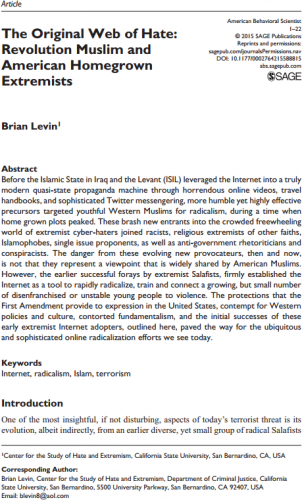Before the Islamic State in Iraq and the Levant (ISIL) leveraged the Internet into a truly modern quasi-state propaganda machine through horrendous online videos, travel handbooks, and sophisticated Twitter messengering, more humble yet highly effective precursors targeted youthful Western Muslims for radicalism, during a time when home grown plots peaked. These brash new entrants into the crowded freewheeling world of extremist cyber-haters joined racists, religious extremists of other faiths, Islamophobes, single issue proponents, as well as anti-government rhetoriticians and conspiracists. The danger from these evolving new provocateurs, then and now, is not that they represent a viewpoint that is widely shared by American Muslims. However, the earlier successful forays by extremist Salafists, firmly established the Internet as a tool to rapidly radicalize, train and connect a growing, but small number of disenfranchised or unstable young people to violence. The protections that the First Amendment provide to expression in the United States, contempt for Western policies and culture, contorted fundamentalism, and the initial successes of these early extremist Internet adopters, outlined here, paved the way for the ubiquitous and sophisticated online radicalization efforts we see today.
